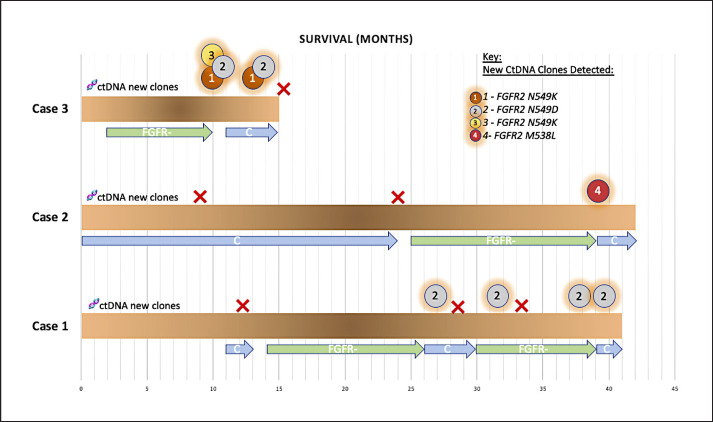Fig. 2.
Summary of outcomes and follow-up on treatment in patients with FGFR fusion-positive metastatic cholangiocarcinoma. They are all alive and on different active treatments at the time of submission of this report. The timeline is in months. As noted, patients with post-FGFR-inhibitor exposure develop clonal as well as polyclonal multiple gatekeeper mutations, some of which are known to cause activation of the pathway and/or hindrance of the FGFR inhibitor receptor binding. The circled numbers represent new clones detected on ctDNA that were not present on comprehensive NGS commercial panel-based testing platforms on their baseline tissue in all 3 and in 2 who had liquid biopsies done at baseline as well (showing that these were truly acquired). The timeline of acquisition also corroborates this since they only appeared at or before progression on FGFR inhibitors.

